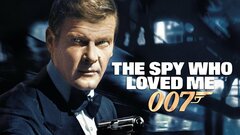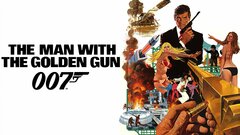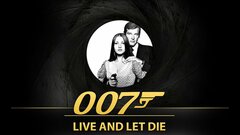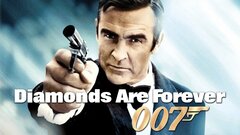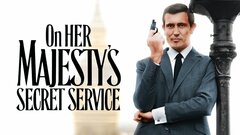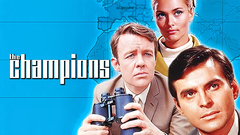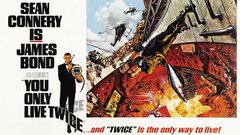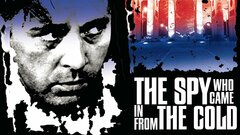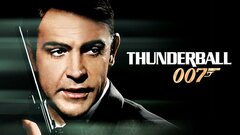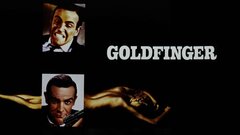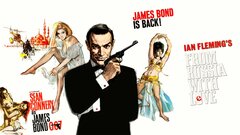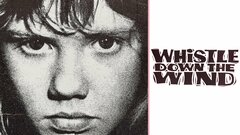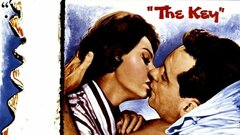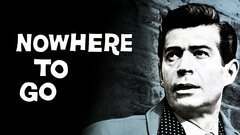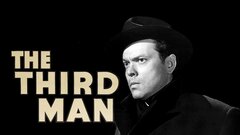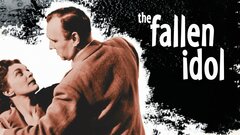An English actor whose screen career spanned more than 100 roles on film and television over nearly five decades, Bernard Lee was best remembered for his recurring appearances as 'M," the no-nonsense head of the British Secret Service in the first 11 James Bond films. The son of a music hall performer, Lee trained with the Royal Academy of Dramatic Art prior to launching a prolific stage career in London's West End.
Early film roles usually saw him cast as either a policeman or military officer in such features as "The Third Man" (1949) and "Seagulls over Sorrento" (1954), but it was with a relatively minor appearance as Bond's superior in "Dr. No" (1962) that indelibly linked him to Ian Fleming's legacy. For most of the two decades that followed, Lee steadily took on roles in projects like "The Spy Who Came in from the Cold" (1965), but increasingly it appeared as though audiences and producers alike only saw him as the authoritarian MI6 chief.
Two years after appearing as M for the final time in "Moonraker" (1979), Lee succumbed to cancer. Although he was eventually replaced in the role, for the majority of die-hard Bond fans, Bernard Lee would always be considered the one true personification of the man known as M.
John Bernard Lee was born on Jan. 10, 1908 in Brentford, Middlesex, England to Nellie Smith and Edmund James Lee, a stage actor. Pulled into the family business as the age of six, Lee first appeared onstage alongside his father in the sketch "The Double Event" at London's Oxford Music Hall in 1914. Later, the young Lee worked as a fruit vendor to pay his fees while attending the revered Royal Academy of Dramatic Art in 1926. After graduating from RADA, he joined repertory companies in Cardiff and Rushholme prior to landing roles on the stages of London's famous West End throughout the 1930s. Popular thrillers and mysteries, with lurid titles like "Root of All Evil" and "Murder Gang" made up the majority of Lee's theatrical endeavors at the time.
Lee made his film debut with a supporting turn as a working-class character in "The Double Event" (1935). The young actor continued to accrue both stage and screen credits, appearing in minor film efforts like the period drama "The Black Tulip" (1937), based on the Alexandre Dumas tale, and "The Terror" (1938), adapted from a novel by popular British author Edgar Wallace. With the outbreak of World War II, Lee served with distinction in the Royal Sussex Regiment until he was discharged in 1946.
After the war, Lee returned to his acting pursuits, working steadily on stage and in a growing number of films. Most notable among these early screen appearances was his turn as stalwart police officer Sgt. Paine in "The Third Man" (1949), the revered thriller starring Orson Welles, based on the novel by Graham Greene and directed by Carol Reed. Roles as policemen soon became a staple of Lee's acting career, with supporting turns as inspectors or police superintendents in crime dramas like "The Blue Lamp" (1949), co-starring a young Dirk Bogarde. Keeping one foot firmly planted on the stage, he also took part in a well-regarded production of the naval drama "Seagulls Over Sorrento" at the West End Apollo Theatre in 1950.
Lee played yet another inspector in "Calling Bulldog Drummond" (1951), a crime-thriller based on the novels of Herman Cyril McNeile, whose titular character would greatly influence an aspiring writer named Ian Fleming in the creation of his own fictional man-of-action at around the same time as the film's release.
Lee played another police inspector, this time opposite Humphrey Bogart in the John Huston production of "Beat the Devil" (1953), a satirical noir co-starring Peter Lorre, Robert Morley and Gina Lollobrigida. The following year he reprised his role from the popular stage production for the film adaptation of "Seagulls Over Sorrento" (1954), starring Gene Kelley and returned to similar waters in the naval docudrama "The Battle of the River Plate" (1956).
By the turn of the decade, Lee's work was gaining notice and the size of his roles increased. He earned high marks for his performance as a bullying factory shop steward in the Richard Attenborough drama "The Angry Silence" (1960) and landed the role of the unscrupulous Captain Hoseason in the big-budget Walt Disney production of Robert Louis Stevenson's adventure classic "Kidnapped" (1960) that same year. A rare leading role came Lee's way as an airline pilot wrongly accused of incompetence in the drama "Trouble in the Sky" (1960), co-starring Hammer horror film regular Peter Cushing.
With his career on the ascendance, he played Haley Mills' troubled father in "Whistle Down the Wind" (1961), a Christian allegory directed by acclaimed British helmer Bryan Forbes, who he reteamed with for the societal drama "The L-Shaped Room" (1962), starring Leslie Caron.
It was this same year that Lee would first appear in the role that, while both a blessing and a curse, would without a doubt become the character with which he would forever be most associated. The first film adaptation of novelist Ian Fleming's popular spy series took the form of "Dr. No" (1962), a highly-stylized, violent and sexually-charged action-adventure that formally introduced the world to James Bond, Agent 007 (Sean Connery). Early in the film, Lee made his debut as 'M,' the straight-backed and stern head of the British Secret Intelligence Service and, most importantly, Bond's boss.
Produced on a relatively modest budget, "Dr. No" proved a smash hit for producers Albert "Cubby" Broccoli and Harry Saltzman, setting the stage for a sequel and, he hoped, more work for Lee. In that regard, Lee need not have worried, as he was soon called back to duty for "From Russia with Love" (1963), in which he sent Bond off to retrieve a Russian cryptograph device from a beautiful defector (Daniel Bianchi). While the work was less than challenging, Lee - along with fellow recurring actors Lois Maxwell and Desmond Llewellyn, who played Miss Moneypenny and 'Q,' respectively - appreciated the added exposure the Bond films provided, hoping they would lead to an increase in the size of his roles on other projects.
And for a time it appeared as if Lee would indeed parlay the role of M into more prominent work. Throughout the first half of the 1960s, the actor appeared with regularity as the dogged Superintendent Meredith on the popular British crime movie series "The Edgar Wallace Mystery Theatre" (ITV, 1960-64). Increasingly, however, it was his role as M that audiences most identified Lee with, in such as blockbusters as "Goldfinger" (1964), the third entry in the Bond franchise.
While minor parts all, other appearances of the time included the Amicus-produced portmanteau horror anthology "Dr. Terror's House of Horrors" (1965) and the adaptation of a popular non-Bond espionage novel, John le Carré's "The Spy Who Came in from the Cold" (1965), starring Richard Burton. Still, the release of "Thunderball" (1965) marked the zenith of the James Bond mania that swept the world, and for the remainder of the decade audiences would be hard pressed to recall Lee turning up in any films other than the 007 adventures "You Only Live Twice" (1967), "On Her Majesty's Secret Service" (1969) and "Diamonds Are Forever" (1971).
As frustrating as the typecasting must have been at the time, a pair of personal tragedies threatened to derail Lee's life and career over the course of the next year. Lee was devastated after a house fire in 1972 took the life of his first wife, Gladys. Only adding to his misery, a brutal mugging by a pair of street toughs the following year left the 64-year-old actor shaken to his core. Lee began to drown his despair and anxiety in alcohol and before long he was finding it hard to attain work. Soon, the bills began to mount. Things looked increasingly dour until a chance meeting with former co-star Richard Burton - himself known for his prodigious alcohol consumption - resulted in Burton lending Lee enough money to square his debts and get back on his feet.
Burton's display of kindness and generosity proved a turning point for Lee, who soon regained his confidence and, eventually, his reputation within the film industry.
The odd job still came Lee's way during this period. He shared screen time with Peter Cushing once more for a brief appearance in the Hammer horror film "Frankenstein and the Monster from Hell" (1973) and a few other minor endeavors. But it was his continued cameos as M - now kept busy reprimanding the latest incarnation of 007 played by Roger Moore - in the Bond entries "Live and Let Die" (1973), "The Man with the Golden Gun" (1974) and "The Spy Who Loved Me" (1977) that placed him in front of broader audiences.
In a rare return to the classics, Lee chewed the scenery with gusto as the Ghost of Christmas Present in a British television production of Dickens' "A Christmas Carol" (BBC, 1977) and lent his patrician air of authority to a recurring role on the glitzy primetime soap "The Foundation" (ITV, 1977-78). As M once more, Lee sent Bond into space for the special effects-heavy "Moonraker" (1979) prior to making his final screen appearance in the made-for-TV mystery "Dangerous Davies: The Last Detective" (ITV, 1981).
After having battled the painful disease for much of the previous year, Lee died from stomach cancer on Jan. 16, 1981 at the age of 73. Sadly, he passed away before filming his scenes for "For Your Eyes Only" (1981). Out of respect for the revered actor, Lee's lines were given to another character for the film, with veteran British actor Robert Brown taking over the role of M for the next installment, "Octopussy" (1983).
By Bryce Coleman



